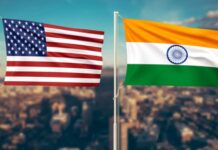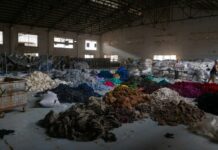On Tuesday, India and the United Kingdom announced the finalisation of a historic Free Trade Agreement (FTA) that promises to strengthen their economic partnership. Dubbed the most comprehensive trade pact India has ever signed, the agreement eliminates tariffs on 99 per cent of Indian exports to the UK, facilitating duty-free access for nearly all of India’s export value. This landmark deal is expected to bring substantial benefits to India’s labour-intensive industries, particularly textiles and apparel, which previously faced tariffs as high as 12–16 per cent on exports to the UK. In return, India will gradually reduce tariffs on 90 per cent of British imports, with 85 per cent of tariff lines becoming duty-free within the next decade. This includes textiles, clothing, and related inputs from the UK.
Why Textiles and Apparel Are Central to the FTA
The textiles and apparel sector carries immense economic significance for both nations. In India, this industry is the second-largest employer after agriculture, providing jobs to over 45 million individuals and serving as a vital component of export earnings. Meanwhile, the UK is one of the world’s largest apparel importers, with annual imports valued at $19–20 billion, and British retailers heavily rely on sourcing from India. This FTA’s features—ranging from tariff reductions to streamlined market access—are set to reshape the bilateral trade landscape, offering transformative growth for UK India FTA textiles industries.
Tariff Reforms Under the FTA
The UK-India FTA eliminates all UK import duties on Indian textiles and apparel, which were previously as high as 12 per cent for garments and 16 per cent for select categories like footwear and carpets. This makes Indian exporters significantly more competitive in the global market. On the other side, India will gradually lower its 10–20 per cent tariffs on British-made textiles and apparel. This includes technical textiles, high-end garments, and specialty fabrics, opening up new opportunities for collaboration.
The agreement also incorporates mutual recognition of standards and simplified customs procedures to address non-tariff barriers. By reducing compliance costs and minimising delivery delays, the measures are particularly advantageous for small and medium-sized enterprises (SMEs) in the fashion sector. The outcome is near-duty-free trade in textiles between the two countries.
Boost to India’s Textile and Apparel Exports
The tariff eliminations under the FTA are expected to significantly enhance India’s textile and apparel exports to the UK. In the past, Indian exporters faced stiff competition from duty-free players like Bangladesh, but this agreement levels the playing field. In 2023, India’s textile exports to the UK were valued at $1.2 billion, representing a 6 per cent market share. However, apparel shipments have already seen a 20 per cent year-on-year rise by late 2024, indicating strong momentum.
Industry experts predict that the UK-India FTA will lead to a surge in orders for Indian garments, home textiles, and made-ups over the next two years. Sudhir Sekhri, Chairman of the AEPC, hailed the pact as a “game changer,” forecasting stronger ties with UK buyers. The agreement is projected to double India’s textile and apparel exports to the UK by 2030, aligning with the goal of doubling bilateral trade within the same timeframe.
Notably, the tariff-free access boosts not just export volumes but also profitability. Indian exporters stand to gain a ~10 per cent cost advantage, enabling them to either reduce prices for competitiveness or improve margins—or both. This is particularly impactful for India’s SME exporters, who often work with thin profit margins. The FTA is also expected to stimulate investments across the textile value chain, including factory expansions and capacity enhancement.
Segment-Specific Impacts
Garments and Apparel
The garment sector is poised to be the biggest beneficiary, including ready-made garments (RMG) like shirts, dresses, and trousers. With UK import duties eliminated, Indian clothing will become more price competitive, opening doors for higher export volumes and market share. India, currently holding a 6 per cent share of the UK apparel import market, could see this rise to 10 per cent or more. The agreement will also encourage value addition and the expansion of product portfolios, including high-end and sustainable fashion.
Home Textiles and Made-ups
Products like bed linens, towels, and carpets, which faced UK import duties of 8–10 per cent, will now enter duty-free. This enhancement benefits leading Indian exporters such as Welspun, Trident, and Bombay Dyeing, enabling them to secure long-term contracts with UK retailers and institutions. India’s home textile exports to the UK, currently around $300 million, are expected to grow to $400–500 million in the medium term.
Technical Textiles
The FTA also offers growth opportunities in technical textiles, used in specialised applications like healthcare, automotive, and infrastructure. With duty-free access and provisions for regulatory cooperation, Indian exporters can more competitively tap the UK market. Conversely, UK technical textile exporters, now facing reduced tariffs, can expand their presence in the Indian market, especially for high-performance and innovative materials. The agreement marks a pivotal moment for the UK India FTA textiles sectors by fostering collaboration in high-value segments.
Conclusion
The UK–India Free Trade Agreement is a transformative step forward for bilateral trade, particularly in textiles and apparel. By removing tariff barriers, the deal paves the way for increased exports, job creation, and market expansion. Indian exporters gain unprecedented access to one of the world’s largest import markets, while UK businesses benefit from reduced tariffs and a growing consumer base in India.
In the coming years, the pact is expected to drive double-digit growth in trade volumes and enable both nations to strengthen their global competitiveness. India’s garment, home textile, and technical textile sectors stand ready to capitalise on this landmark agreement, reaping long-term benefits for businesses, workers, and economies on both sides.



































